 I
would like to invite you to present your art work on my blog
Exposition. Please, send me pictures of your work on my e-mail
address : milenaolesinska77@gmail.com Description
should include; your name, some details about your work. All art work will be published on the blog free of
charge
I
would like to invite you to present your art work on my blog
Exposition. Please, send me pictures of your work on my e-mail
address : milenaolesinska77@gmail.com Description
should include; your name, some details about your work. All art work will be published on the blog free of
charge
Richard Spasoff
California- Las Vegas based creative Visionary Artist and Angelic Intuitive Richard Spasoff is an award-winning fine art photographer and accomplished contemporary artist. His strikingly innovative and exuberant style translates what he sees into abstract images and figures leading us gently into his dream world with a well harmonized bold celebration of color. A self-taught artist, Richard began his artistic career at an early age. Richard’s photographs are featured in a national publication on healing arts, and he has held one-man art gallery shows in La Jolla, Las Vegas, as well as in Mexico.
He has also worked at Universal Studies in Hollywood and at Keepers of the Wild in Arizona doing art images of the animals. Richard’s sensitivity and unusual creativity come forth in his work in a modern surrealistic style that allows others to appreciate the beauty and share their sentiments with their loved ones through the images he creates. Collectors of Richard’s work include George Carlin, Willie Nelson, Smothers Brothers, Gary Owens and Ronnie Schell.
Richard Spasoff is an internationally renowned modern day psychic, medium,and Stand Up Comedian, motivational speaker, and radio/television personality for over 25 years. He has given accurate and insightful psychic readings to clients ranging from everyday citizens to celebrities, people in law enforcement, clergy, judges, attorneys and business CEOs.Richard has been interviewed on numerous TV and radio shows, as well as being a popular radio host . He uses his God-given gifts in the spiritual world, warm personality, and ability to see things from a different perspective to bring answers to the forefront.Richard is more than just a psychic. He also has the unique ability to Communicate with loved ones that have passed on. He shares his gift of spirit communication by providing answers and closure, which allows the healing process to begin.
Richard amazes his audience and personal clients with the astounding detail and accuracy of the information he provides during his sessions, leaving even the most skeptical individual a believer. Richard Spasoff is bringing the world of the Metaphysical and paranormal to the mainstream.
Contact : Untied States 760-718-9680
E-mail: visionaryartbyrichard@gmail.com
Website / Facebook / Instagram
 |
| Entitled: Dice and Flow Name: Visionary Artist and Intuitive Richard Spasoff 20"x '20" digital photography (will be matted and mount) Price: $300 {Untied States} |
 |
| Entitled: Enchantment Of Butterflies Name: Visionary Artist and Intuitive Richard Spasoff 20"x '20" digital photography (will be matted and mount) Price: $325 {Untied States} |
 |
| Entitled: Demons and God's Angels Name: Visionary Artist and Intuitive Richard Spasoff 15"x '20" digital photography (will be matted and mount) Price: $250 {Untied States} |
Dave Graham - Artwork
Illustrative Cartoons 8.5"x11", mixed media on mix media paper
My facebook linkis
Michał Stach
Digital Art
Gerard Rutteman
“Prospect”, collage of monoprint and journal (2019)
 |
| Drager Meurtant. |
Jeannie Scott - Tarantola - Digital Art
Viliam Mruškovič
I am 51 years old and I live in Slovakia where the most of my exhibitions use to take place but sometimes you can find me abroad too. My favourite theme is mainly a landscape and I create my pictures with concrete and acrylic on canvas. My artworks are structured in 3D effect and I like to adjust the small pictures into author's frames in shabby chic style. Below you can find a presentation of my newest landscapes and also some details of the pictures. Be my fans: www.facebook.com/Gallery.of.paintings
More
Jeannie Tarantola
Edward Kienholz
"Edward Kienholz, (born October 23, 1927, Fairfield, Washington, U.S.—died June 10, 1994, Hope, Idaho), American self-taught sculptor known for his elaborate found-object assemblages, which convey a harsh scrutiny of American society.
Kienholz grew up in a working-class family on a farm in Washington state and learned auto repair, carpentry, and metalwork skills that served his art well later in life. He briefly attended Eastern Washington College of Education (now Eastern Washington University) in Cheney, Washington, and Whitworth College in Spokane, but he did not earn a degree. He did not study art in school, but he pursued painting on his own until he moved to Los Angeles in 1953 and began producing large wooden reliefs composed of found objects and industrial paints (procured from auto shops and the like). While living in Los Angeles, Kienholz opened two galleries, first the Now Gallery (opened 1956), which he closed in 1957 to partner that year with artist Walter Hopps in opening the Ferus Gallery, which became a successful space for avant-garde exhibitions through 1966.Kienholz moved away from the relief format to concentrate on elaborately detailed three-dimensional assemblages. His most-famous walk-in scenes include Roxy’s (1961), a replica of a 1943 Las Vegas bordello; Back Seat Dodge ’38 (1964), an intimate tableau of a couple entwined in the backseat of a car; and The Beanery (1965), a reproduction of a decrepit bar with 17 figures, piped-in smells, jukebox music, and background conversation. Critics labeled some of his images repulsive or even pornographic. From 1972 he frequently collaborated with his fifth wife, Nancy Reddin. In 1973 he and his wife began splitting their time between Berlin, where they set up a studio, and Hope, Idaho, where in 1977 they established the Faith and Charity in Hope Gallery. In 1981 he declared in writing in an exhibition catalog that all works made since 1972, the year they had married, should be considered collaborations and credited simply to “Kienholz,” both of them. Kienholz died suddenly from a heart attack at age 67. Per his request, his wife buried him in Idaho (with a dollar and a deck of cards in his pocket) in one of his own installations, a 1940 Ford Packard, which also contained his dog’s ashes and a bottle of wine."(britannica.com)
Michael Mallalieu
Collage
Mirror - M.Frias
More
Safia Wosth
James Coignard
James Coignard, painter, ceramist, sculptor and etcher, was born in Tours in 1925. At the age of 23 and after a brief career in the French administration, he discovers the landscapes of the French Riviera and decides to study at Arts décoratifs in Nice. Four years later, he quits his job at the administration to commit himself entirely to his artistic career. The encounter with Paul Hervieu in 1950 is decisive. His collaboration with gallery Hervieu made him known in artistic circles, nationally and internationally and then particularly in Scandinavia. At the beginning of his career, art critics label James Coignard as a member of Ecole de Paris. Soon, his painting and ceramic distances themselves from those of his colleagues and he goes it alone. At the beginning of the sixties, he starts to work with glass but the technical turning point occurs in 1968 when his friend Henri Goetz discovers a new etching technique, using carborundum. Etching then becomes central in his work. At the same time, his career takes off internationally. He travels a lot, especially to Sweden and USA where he lives during a few years. 1978, James Coignard participates in the creation of the etching studio Pasnic, with which he starts a long collaboration. During the eighties, he shares his time between Paris and the French Riviera and takes an interest in artist’s books and publishing issues. He exhibits now all over the world, and is acknowledged as one of the greatest painter-etchers of his time. Until his decease in 2008, James Coignard was a prolific painter, sculptor and etcher and leaves behind an immense work.(.jamescoignard.net)
Martin Grandval
Buenos Aires - Brazil
Drager Meurtant
Drager Meurtant (1951, The Netherlands) has been active as “composer” and creative writer since 1980. In the more than three decades since his training as as veterinarian-biomedical researcher these creations were in the shape of scientific publications and – in free time – as poems. In more recent years (and learning rapidly) creations took form as sculptures (in particular assemblages), collages, paintings and graphical works. As autodidact and experienced carpenter, the circle saw, the jig-saw, chisel, gouge, hammer is used to handle natural materials (wood, stone) in addition to manufactured (paper, cloth) and construction material (metal, glass, etcetera). Much of the basic elements are from demolition- / remnant materials ("recycling art"). Walking in civilized areas as well as in nature, making photographs is considered complementary in the attempt to catch the world we live in.
Writing: “Assemblages: the entrails explained” in Axon Journal, Issue 9 (Assemblage): http://www.axonjournal.com.au/issue-9/assemblages
Other essays with views or reviews on art: www.dragermeurtant.wordpress.com. and on http://kdoutsiderart.tumblr.com/dragermeurtant
Memberhip: The International Society of Assemblage and Collage Artists (US), Artlyst (UK)
Supporter of Platform Free Fossil Fund: to make culture free from sponsoring by fossil fuel industries (www.fossilfundsfree.org).
The artist has exhibited work in The Netherlands, Germany, The USA; one related publication by Walter van Teeffelen, World artists and their story – 23 – Drager Meurtant, October 8, 2016,
 |
| Surface "The surface of no image / can beat the depth / below the reality. // The raw nucleus of nature / does not reveal." (2017, photograph) |
 |
| Jetzt Tout text to artwork: "Wir treuen falsche Freunde um mehr Kultur” (we trust false friends for more culture) |
Rome Blood
Just art whatever come to my done a lot of Street stuff
More
Mixed-media and collage Nigel Henderson
Nigel Henderson (1 April 1917 - 15 May 1985)was an English documentary artist, and photographer.Henderson's parents divorced when he was young. His mother, Wyn Henderson, creatively inspired him to pursue a career in art. At the beginning of her career Wyn managed The Hours Press for Nancy Cunard. She decided to quit after a heated argument with Cunard. Wyn returned to London to live in the heart of Bloomsbury, in Gordon Square. Nigel opted to live with his mother instead of his father's ordinary family. In 1938, Wyn found a gig managing the Guggenheim Jeune for Peggy Guggenheim; a famous collector of modern art. Nigel studied biology at Chelsea Polytechnic in London from 1935–1936. He then worked as an assistant to Helmut Ruhemann from 1936–1939. In the late 1930s Henderson developed paintings inspired by Yves Tanguy. Through his mother's ties, Henderson met leading artists of avant-garde such as Max Ernst and Marcel Duchamp. In 1938, Henderson exhibited two collages at the Guggenheim Jeune alongside artists such as Ernst, Braque, Picasso, Schwitters and Gris. Henderson put his passion for art aside to join the war effort as a pilot in Coastal Command. In 1943 he married Judith Stephen; an anthropologist who introduced him to life on working class streets. During this period Henderson took various photographs of street life and began to compile documentaries. He also continued to experiment with collages and the physicality of photography.
After his World War Two venture he studied at the Slade School of Fine Art in London. At Slade he befriended Eduardo Paolozzi and William Turnbull. He and Paolozzi travelled to Paris and met other artists such as Brancusi, Léger, Giacometti, and Braque. After leaving Slade Henderson fell back in love with photography. While living in Bethnal Green between 1949–1952, he took numerous documentary photographs of the area. He achieved abnormal effects by using various techniques such as altering negatives and placing images on light-sensitive paper to create Photograms. In the early 1950s he was a member of the Independent Group and taught at the Central School of Art with Anthony Froshaug, Edward Wright and Eduardo Paolozzi. With Paolozzi and others he participated in the Parallel of Life and Art exhibition at the ICA in London. He also took part in the exhibition This is Tomorrow at the Whitechapel Gallery in 1956. At This is Tomorrow, Henderson exhibited a large and disturbing image entitled “Head of Man.” After performing his first major one man show at the ICA, he began colouring in some of his photographs with paint. One of his most famous coloured photographs is “Plant Tantrums.” From 1965–1968 and from 1972–1982 he headed the photography department at Norwich School of Art while working on independent projects. Henderson produced most of his work in series connected by a single visceral image. One of his series named "Face at the Window" focused on the image of a bandaged face which Henderson found on a cigarette card. He followed with two other series entitled Head in Blocks, and Single Heads, in which he created various versions of self-portraits.
Surreal DArk Art Fantasy Paulo Paulauskas
Natural : Brazil
Photomanipulation ,Digital Art
Mila Smagliy
More
Madame Bizarre
My artistic name is Madame Bizarre. I'm Spanish and I'm illustrator, graphic designer and mixed media artist.
Some of my works:
Color Fool: Black ballpoint pen, paper, rhinestones, fabric, and acrylic colour over a wood board.
Glándula Pineal: Blue ballpoint pen, paper, rhinestones, fabric, costume jewelry, African seashell and acrylic colour over a wood board.
Rebirth: Blue and black ballpoint pen, Pencil colors, glitter, fineliner pens on a wood board.
Me ves: Black ballpoint pen, Pencil colors, watercolors, glitter, acrylic, fineliner pens, rhinestones, paper on a wood board.
Bogdan Lachowicz - clocks
More
Digital art Marcin Bobak
Polish contemporary artist
Usamah Kise
Usamah Kise is an Illustrator and Artist from Nottingham, now based in London. His specialism is principally within reportage illustration combined with mixed media collage. Reportage Illustration is an art form that in its essence documents and observes the world around us. And in his case cities and telling the stories of the lives of the people who live and pass through it.
Coming from a background of graffiti, with 7 years’ experience, graffiti played a huge impact on his prolific style and has gotten him to where he is now. It's given him the opportunity to work with other artists, musicians and travel the world. Example of this are being part of the well-recognized documentary ‘Pride, Pole and Prejudice’ shown at the infamous Regent Street cinema which was nominated at 2015 Santé Fe film awards in New Mexico, working with political activist, artist and poet ‘Lowkey’ and being part of a DVD about the history of Nottingham graffiti which was shown at Nottingham Trent University.
As Kise has gotten older, his style has naturally developed and moved away from typographic letters and graffiti and more in to Illustration. Many have described his style as very expressive, aggressive and playful. He is notorious for incorporating a range of different techniques within each piece and making each one individual. He aims to find a balance between looseness and sharpness.(www.usamahkise.com)
Katheryn Berrios
Fashion Designer & Visual Art
My Biography
My name is Katheryn Berrios, was born in Lima, Peru, resident in Rio de Janeiro. I'm Visual artist & Fashion designer, among other artistic expressions.
I started my career as a stylist for several years, creating unique pieces using various materials to criálas, breaking shapes and colors, creating a unique style, the which were exposed in shops, galleries, events in which I participated, and interviews they did me.
Thus, I was expanding my horizons to new aspects of artistic expression, visual arts gave me the freedom to continue shape my work with other nuances, but with greater intensity in screen transgression to touch and move the viewer.
My Work
Here I show some works from the collection swirls. Heart, Soul, Hiking, Bindings, Nucleus. Which they are creations as a concept that is based on those emotional frenzies, existential, reflecting the intense colors with force, with a peculiar nuance in combination. In his own compocision I wanted experience in the organization of the elements.
The medium used is mixed media, 3D sculpting, using a variety of materials combined with paint, so to achieve that relief in the work, and more natural in its finish, giving the strong expression to the work, in the same way They are abstract works that speak for themselves, emotion and this peculiarity of my creation.
More
Gil Joseph Wolman
Gil Joseph Wolman (Paris, 1929 – Paris, 1995) was a French artist. His work encompassed painting, poetry and film-making. He was a member of Isidore Isou's avant garde Letterist movement in the early 1950s, then becoming a central figure in the Letterist International, the group which would subsequently develop (without Wolman himself) into the Situationist International.
Aluminium art Denis Young
"Denis Young, born in 1971 in Eindhoven, is a certified screen-printer by profession. Becoming fascinated by abstract and figurative art at an early age, has enjoyed painting, drawing and air-brushing ever since.
Denis started in 1997 at the Art Academy of Arendonk (Belgium), where he specialized in painting with oil based paint and the use of thick paintbrushes. These techniques allowed for the development of more expressionistic and abstract works. After attending the Art Academie, Denis developed his own idea to create unique works of art through the combination of experimental screen-printing, painting and edited aluminium.
Especialy in the portaits one can observe the daring and intricate play between the use of contrast and texture (relief) of the aluminium, where the consciously leaving out the eyes, and the creation of wrinkles and skinlines shroud each art piece with a certain mystique.
The use of texture and relief of the aluminium in combination with the creative use of lightning ensure the unique and daring character of each individual art piece, and is a process from which Denis, as an artist, enjoys great (personal) satisfaction." (Denis Young www.denisyoung.nl )
Patrick Chabry
Mixed Media - Photo Collage Larian Artist
Rosa Sanchez
Rosa Sanchez Spanish origin and I live in France, near Paris, for 23 years.
I like to mix the materials, I am self taught and I work with acrylic, pastels, watercolors, sometimes alone or mixed each discipline.
 |
| Acrylic paper, fabric, metal and pushes gesso |
 |
| Paper acrylic, fabric and gesso |
Saturn's Angel
Saturn's Angel is watermarked on some of the pictures, that is the company name,
we do all kinds of styles from expressive to realism and everything in between. Acrylic, oils, spray paint, watercolor and colored pencils
Jan Saudek
Jan Saudek (born 13 May 1935 in Prague, Czechoslovakia) is a Czech art photographer and painter
His best-known work is noted for its hand-tinted portrayal of painterly dream worlds, often inhabited by nude or semi-nude figures surrounded by bare plaster walls or painted backdrops, frequently re-using identical elements (for instance, a clouded sky or a view of Prague's Charles Bridge). In this they echo the studio and tableaux works of mid nineteenth century erotic photographers, as well as the works of the painter Balthus, and of Bernard Faucon. His early art photography is noted for its evocation of childhood. His later works often portrayed the evolution from child to adult (re-photographing the same composition/pose, and with the same subjects, over many years). Religious motifs or the ambiguity between man and woman have also been some of Jan Saudek's recurring themes. His work was the subject of attempts at censorship in the West during the 1990s.Wikipedia
Hidden Impressions Gershon Edelstein
I am a professional archaeologist, after retiring I started a new profession artist. I discovered a way to create digital art which I print on canvas. I call my art hidden Impressions. I have created a few hundreds of pictures that you can see in my site and in facebook hidden impressions.
My love of artistic activity has led me to discover digital art. For a few years I have been experimenting, creating pictures digitally; cutting out sections of images and restructuring them to create surprising new shapes. I search for the right balance between the various parts. Actually the images create themselves. What I do is “capture” the shapes and link them in a manner that creates a new texture.
Looking at the images evokes a personal impression, everyone sees them differently. There are people who may be indifferent and there are those who ask for an explanation. Perhaps it is best to let the image enter the heart directly and allow it to nourish the soul.
More
Abstract Photography Vladimir Stevanović
Serbia
Artistic photography Irving Penn
Irving Penn (June 16, 1917 – October 7, 2009) was an American photographer known for both his commercial and fine art images. In dramatic black and white, he captured portraits, still lifes, and nudes with a high degree of technical precision and compositional balance. He was known for finding beauty outside of the fashion industry’s standards throughout his career—regularly photographing street debris, animal skulls, and aging artists in addition to his better-known images of celebrities and icons. Born on June 16, 1917 in Plainfield, NJ, Penn studied art and design at the Pennsylvania Museum School of Industrial. After graduating, he moved to New York to work as a freelance designer and illustrator, and took up photography while working for Harper’s Bazaar not long after. Penn has been honored with the Hasselblad Award in Photography, and his work has been exhibited at The Museum of Modern Art in New York, the Moderna Museet in Stockholm, the Smithsonian Institute in Washington, D.C., the Getty Museum in Los Angeles, and the Tate Modern in London. He died October 7, 2009 in New York, NY at the age of 92. (artnet.com)
Collage art Teresa Rudowicz
Teresa Rudowicz born in 1928 in Torun, he died in 1994 in Krakow. She was one of the most distinct personalities in the Krakow artistic community.
Digital art Brummbaer
Brummbaer (born August 18, 1945 - January 16, 2016) was a German digital artist who has done work as an art director, designer, graphic artist, and 3D modeler. As an actor he has appeared in various German TV movies, and also produced and directed. In the latter part of his career he became focused on computer graphics, created several short computer-generated animations and made visual effects for movies.Wikipedia
Eric John Campbell
Digital art
Westlake , Oh. USA
More
Kurt Schwitters
German painter, sculptor, typographer and writer. Born in Hanover. Studied at the School of Arts and Crafts in Hanover 1908-9 and at Dresden Academy 1909-14. Influenced by Expressionism and Cubism 1917-18. In 1918 created his own form of Dada in Hanover called 'Merz', using rubbish materials such as labels, bus tickets and bits of broken wood in his collages and constructions. Friendship with Arp, Hausmann and van Doesburg. Published the first edition of Anna Blume (a collection of poems and prose pieces) in 1919 and the magazine Merz 1923-32. First one-man exhibition at the Galerie Der Sturm, Berlin, 1920. Began in 1923 to build fantastic Merz constructions in his house in Hanover (the first 'Merzbau'). Spent the summers in Norway from 1931 and emigrated in 1937 to Lysaker near Oslo. Fled to England in 1940, spent seventeen months in internment camps, then lived 1941-5 in London. Moved in 1945 to Ambleside in the Lake District. In the last months of his life, he began a further Merz construction in an old barn at Langdale. Died at Kendal.(tate.org.uk)
Gordon Bennett
Born Monto, Queensland 1955-2014; lived and worked in Brisbane
Gordon Bennett is internationally acclaimed as one of Australia's most significant and critically engaged contemporary artists. He is recognised for his powerful perspectives on the post colonial experience, particularly in the Australian context, with much of his work mapping alternative histories and questioning racial categorisations and stereotypes. As a way to expand his oeuvre, Bennett regularly adopted the persona 'John Citizen'. This invented character existed as a disguise playing with the rhetoric of identity. Moreover, by shifting his artistic style under the John Citizen pseudonym, Bennett avoided typecasting his practice.( suttongallery.com.au)
Bruce Conner
Bruce Conner, (born Nov. 18, 1933, McPherson, Kan.—died July 7, 2008, San Francisco, Calif.) American artist who explored themes of light and dark in a wide variety of media, including assemblages, experimental film, drawings, and photograms. Associated with the San Francisco Bay Area Beat scene in the late 1950s, he first attracted attention with his complex assemblages of found objects. The best known of his short films (also collages of found and new footage) was the 12-minute A Movie (1958), which in 1991 was added to the National Film Registry at the Library of Congress. Other works include intricate mandala drawings, photograms of his body, ink-blot drawings, and small collages. Conner’s art was acquired by several museums, including the Guggenheim Museum and the Whitney Museum of American Art, and was included in the 1996 exhibit “Beat Culture, 1950–1965” at the Whitney. In 1999–2001 a retrospective, “2000 BC: The Bruce Conner Story Part II,” was mounted in several museums, starting with the Walker Art Center in Minneapolis, Minn., and concluding at the Museum of Contemporary Art in Los .(Encyclopædia Britannica)
Conrad Marca-Relli
Conrad Marca-Relli’s paintings and collages evoke architecture and the figure through intersecting abstract shapes. Working initially as a painter of surrealistic carnival scenes and cityscapes, he later came into contact with Abstract Expressionists like Willem de Kooning, which ushered in a dramatic shift in his practice towards purer abstraction. While still retaining an interest in architecture and urban landscape, Marca-Relli experimented with abstract collage, integrating figural elements made from textiles, drawings, metals, and plastics: this would become the defining practice of his career.(artsy.net)
Frank Savage
More
LeRoy Neiman
LeRoy Neiman is an American artist who blended Pop Art with Impressionistic brushwork and vibrant color. “I do not depart from the colors borrowed from life,” he had said, “but I use color to emphasize the scent, the spirit, and the feeling of the thing I’ve experienced.” His scenes of sporting events and leisure activities were published in magazines—most notably, Playboy—he also captivated audiences by drawing or painting portraits live on television. Born LeRoy Runquist June 8, 1921 in St. Paul, MN, the painter enrolled briefly at the St. Paul School of Art and then at the Art Institute of Chicago after his military service. The prolific and popular artist donated a substantial gift to Columbia University’s School of Arts in 1995, thereby creating its LeRoy Neiman Center for Print Studies. Neiman died June 20, 2012 in New York, NY at the age of 91(artnet)
Jirí Kolá
Jirí Kolár was born in Protivín/Czechoslovakia in 1914. At the age of twenty he encountered surrealistic collages at the Mozarteum in Prague, which already at that time only consisted of reproductions. Since 1943 Jirí Kólar worked as a freelance author, published poems and translations and worked as an editor for the association Dílo in Prague between 1945 and 1948.
He was co-founder of the "Gruppe 42", an association of Czech artists and men of letters and he was a member of the group "Kreuzung". In 1953 Jirí Kolár spent months under arrest because his texts were regarded as subversive during the time of Stalinsm. In spite of a publication ban, which was not lifted until 1964, he continued to write poems, ballets and dramas.
Around 1959 Jirí Kolár abandonned his poetic work to attend exclusively to visual arts: he developed the "Rollage"-technique, executed chiasmages, rumples, assemblages and visual poetry. He included materials from everyday-life like hairs, razor blades, zippers, cords et al. in his works.
Over the years Jirí Kolár experimented with text and image, combined poetry and visual arts to colour and touch poems and varied his forms in many different ways. Circle rollages and transparent poems were executed and finally he began with three dimensional works and produced miniature-objects.
In 1968 he received the prize of the central committee in Prague, one year later the first prize at the X. Biennale of Sao Paulo. Whereas his trips until then only led him through Europe, he now visited Japan, Canada and the USA. In 1970 he suffered from a stroke, but soon he regained his creative powers and developed kinetic rollages and clay-poems.
In 1975 his works were shown at the Solomon R. Guggenheim Museum in New York. Since 1980 Jirí Kolár lived in Paris and obtained French citizenship in 1984. In 1990 he participated in the Biennale in Venice. In 1992 he once more obtained Czech citizenship.
The versatile artist Jirí Kolár died in Prague in 2002.(jiri-kolar.com)
Joana Bieniasz
Original Papercut Art
More
Photo Collage - Menon
More
Sigmar Polke
German painter. In 1963 Polke launched Capitalist Realism in response to Pop art, exhibiting the first works in this genre in Düsseldorf. Polke took as his motifs such ordinary food items as chocolate, sausages or biscuits, isolating them and apparently depriving them of their tactility in order to elevate them to the status of aesthetic signs.
Such Pop-related images, pictured in various combinations and in a number of techniques, became from this time standard elements of Polke's work. The scattered dots in more complex works form a virtually abstract pattern that makes the imagery almost invisible when viewed from near the surface. Graphic alterations help to increase this sense of unfamiliarity, blurring the boundary between the objective reproduction of reality and the subjective production of art.
A different process was used for the Fabric Pictures. In these Polke used printed fabrics, which in their triviality reveal the tastelessness of everyday life, as background patterns for gestures and motifs drawn from earlier art and especially from mainstream modernism. Irreconcilable images are brought together. He continued to appropriate images and techniques from other artists and found materials.
In other paintings Polke introduced another variation of his attack on conventional ideas about individuality and innate creativity by altering the lines of his own palm.
Polke's love of experiment, of abrupt stylistic changes and of contradiction, irony and mocking distance thus remained essential to his uncategorisable and innovative art.(.tate.org.uk)
David Wojnarowicz
David Wojnarowicz was an abused child, a teen runaway who barely finished high school, but he emerged as one of the most important voices of his generation. He found his tribe in New York's East Village, a neighborhood noted in the 1970s and '80s for drugs, blight, and a burgeoning art scene. His creativity spilled out in paintings, photographs, films, texts, installations, and in his life and its recounting―creating a sort of mythos around himself. His circle of East Village artists moved into the national spotlight just as the AIDS plague began its devastating advance, and as right-wing culture warriors reared their heads. As Wojnarowicz's reputation as an artist grew, so did his reputation as an agitator―because he dealt so openly with his homosexuality, so angrily with his circumstances as a Person With AIDS, and so fiercely with his would-be censors (Fire in the Belly: The Life and Times of David Wojnarowicz )
Jorge Portela
I'm presently working on abstract or figurative works using either mix media (painting, photography, video and digital work) or pure digital painting.
Wikipedia
Tracy Algar
My paintings are visual depictions of the connections between my
soul and the world I live in. They are messages from deep within.
The imagery in my paintings comes from an innate sense of
connection to nature, my empathic response to our environment and
fellow beings, and my animist worldview.I am fascinated with symbolism and use symbols to convey story & meaning in my art.I paint in layers, slowly bringing order and sense to the tale unfolding on my canvas. My painting process is spontaneous. I work
intuitively with colour and line in a range of mediums, including
acrylic paint, oil charcoal, ink and oil pastel. Tracy Algar South Africa.
www.tracyalgar.co.za
Felipe Jesus Consalvos
Felipe Jesus Consalvos (1891 – c. 1960) was a Cuban-American cigar roller and artist, known for his posthumously-discovered body of art work based on the vernacular tradition of cigar band collage.
Angus Fairhurst
Angus Fairhurst (4 October 1966 – 29 March 2008) was an English artist working in installation, photography and video. He was one of the Young British Artists
Angus Fairhurst was born in Pembury, Kent. Having attended The Judd School between 1978 and 1985, he studied at Canterbury Art College 1985–1986, and graduated in 1989 in Fine Art at Goldsmiths College, where he was in the same year as Damien Hirst. In February 1988, Fairhurst organised a show of student work, which was a precursor to the Freeze show largely organised by Hirst in July 1988 with sixteen other students from Goldsmith, including Fairhurst.Fairhurst and Hirst became close friends and collaborated on many projects. Fairhurst was also for several years the partner and sometime-collaborator of Sarah Lucas.
Fairhurst's work was often characterised by visual distortion and practical jokes. An example is his drawing of a gorilla holding a fish under its oxter and both staring at a plate of chips.He worked in different media, including video, photography and painting, and is noted for sculptures of gorillas.
A Couple of Differences Between Thinking and Feeling II, 2003, by Angus Fairhurst
Angus Fairhurst exhibited nationally and internationally after graduating from Goldsmiths. Exhibitions include Freeze and Some Went Mad and Some Ran Away, Brilliant! at the Walker Art Center and Apocalypse at the Royal Academy in 2001. A 2004 exhibition In-A-Gadda-Da-Vida, was held at the Tate Gallery with Hirst and Lucas.Wikipedia
François Colos
François Colos (born Ferencz Szalay; Hungary, 1933–Manhattan, 1989) was a Hungarian-born designer and artist, established in the US. In addition to his long career as a designer for French and American newspapers, magazines, and companies, he was the author of a 14-year collage diary (1976–1989)
He began studying graphic art and engraving techniques in 1974, but was arrested by the political arm of the police in 1951, and sent to a coal mine deep in the Gulag. He was freed in 1956, during the Hungarian revolution and arrived in Paris, France in 1957, to begin studying at the Ecole des Beaux Arts and the Ecole du Louvre.
In 1958 he illustrated several books and magazines, winning several prizes in Belgium, England, and Germany.
In 1959 he started working in his main field, collage – a technique which would lead to his second love – photography.In 1960 he received his first photographic assignment in Rome, Italy, and in 1961 participated at the Cannes Film Festival.
In 1964, after two short film features in England and Canary Islands, he started a 5-year association with French television, introducing a new graphic style.Wikipedia
Photo collage Kenneth Johnston
Burhan Doğançay
With posters and objects gathered from walls forming the main ingredient for his work, it is only logical that Dogançay's preferred medium has been predominantly 'collage' and to some extent 'fumage'. Dogançay re-creates the look of urban billboards, graffiti-covered wall surfaces, as well as broken or neglected entrances such as windows and doors in different series. The only masters with whom he compares himself are those from the last heroic period of art that he experienced and in which he was an active participant, notably Robert Rauschenberg and Jasper Johns. Dogancay, however, has always preferred to reproduce fragments of wall surface in their mutual relations just as he found them, and with minimal adjustment of color or position, rather than up-end them or combine them casually in the Rauschenberg manner.
In large measure his practice has been one of simulation in the spirit of record-keeping, carried out with the collector's rather than the scavenger's eye. In many cases, his paintings evoke the decay and destruction of the city, the alienated feeling that urban life is in ruins and out of control, and that we cannot put the pieces together again. Pictorial fragments are often detached from their original context and rearranged in new, sometimes inscrutable combinations. So the diversifications of his complex and uniformly experimental painterly oeuvre will always range from photographic realism to abstraction, from pop art to material image/montage/collage. In the 1970s and 1980s he gained fame with his interpretation of urban walls in his signature ribbons series, which in contrast to his collaged billboard works such as the Cones Series, Doors Series or Alexander's Walls consist of clean paper strips and their calligraphically-shaped shadows. This series later gave rise to alucobond–aluminum composite shadow sculptures and Aubusson Tapestries.Wikipedia
Alex Thomas
Mixed-Media, traditional and digital artist
Jess Collins - Jess
Jess Collins (August 6, 1923 – January 2, 2004), simply known today as Jess, was an American visual artist.
Many of Jess's paintings and collages have themes drawn from chemistry, alchemy, the occult, and male beauty, including a series called Translations (1959–1976) which is done with heavily laid-on paint in a paint-by-number style. In 1975, the Wadsworth Atheneum Museum of Art displayed six of the "Translations" paintings in their MATRIX 2 exhibition.[1] Collins also created elaborate collages using old book illustrations and comic strips (particularly, the strip Dick Tracy, which he used to make his own strip Tricky Cad). Jess's final work, Narkissos, is a complex rendered 6'x5' drawing owned by the San Francisco Museum of Modern Art.Wikipedia
Joseph Cornell
Joseph Cornell (December 24, 1903 – December 29, 1972) was an American artist and sculptor, one of the pioneers and most celebrated exponents of assemblage. Wikipedia
Influenced by the Surrealists, he was also an avant-garde experimental filmmaker
Using the Surrealist technique of unexpected juxtaposition, Joseph Cornell's best-known works are glass-fronted boxes into which he placed and arranged Victorian bric-a-brac, old photographs, dime-store trinkets, and other found elements. Generally referred to as "shadow boxes," the resulting pieces are dream-like miniature tableaux that inspire the viewer to see each component in a new light. Cornell often used the shadow boxes to address recurrent themes of interest such as childhood, space, and birds, and they represented an escape of sorts for their creator, who was famously reclusive. Among the earliest examples of assemblage, the shadow boxes also helped give rise to a host of other Modern and Contemporary American art forms, from Installation art to Fluxus boxes.(.theartstory.org)
Teppo Korte
My name is Teppo Korte, born 1974 in Finland, now I live in the Netherlands.
I studied architecture in Finland. Structures and science are at the basis of the mental landscapes.
I use resin and spray paint in my works, sometimes also led-lights.
some details about the works attached:
-Matter of life, 100 x 100 cm, 2015. Cell structures are representing all kinds of forms of life, beyond the surface are human figures.
-Tetris III, 50 x 50 cm, 2015. Inspired by classic computer game.
-Seashore, 50 x 50 cm, 2015. Exploring phenomenas of nature.
-Andromeda, 45 x 92 cm, 2015. Inspired by space.
Nancy Spero
Nancy Spero (August 24, 1926 – October 18, 2009) was an American visual artist.
A leading figure in the feminist art movement of the 1960s, Nancy Spero explored female sexuality, suffering, and heroism, as well as the horrors of war, in gouache and ink works on paper. Spero drew from ancient mythologies and iconographies to produce her burlesque cast of pagan goddesses, Celtic fertility figures, and Amazon warriors, which she pulled from books on ancient art before manipulating and incorporating them into her own drawings and collages. Her well-known 1966–70 “War” series, produced during the Vietnam years, explored the atrocities of war, a subject Spero revisited in her later career with frieze-like drawings installed around the walls of galleries, depicting masses of screaming figures and helicopters overhead dropping human-shaped bombs. Her work Cri de Coeur (2005) portrays mourning women from ancient Egypt. “I am thinking about the women’s condition, showing victimage or celebratory sexuality in an exaggerated way,” she once said. Spero was married to the late artist Leon Golub, and was a founding member of the feminist A.I.R. gallery, started in 1972.( artsy.net )
Keo Gathman
More
Sigmar Polke
Sigmar Polke has constantly defied aesthetic boundaries in his work, extending the visual vocabularies of painting, photography, and printmaking through a mercurial working process. His investigations into the effects that can be achieved by embracing a vast range of materials, pictorial sources, and art practices have been highly influential to successive generations of artists. Within his wealth of material can also be found mystery—he is frequently called enigmatic, elliptical, obscure. Over the past forty years, he has created a body of work that continues to provoke and entrance, marking a significant bridge between the twentieth century and the twenty-first.( walke rart )
Susanne Neuls
More
Carl Beam
Carl Beam R.C.A. (May 24, 1943 – July 30, 2005), born Carl Edward Migwans, made Canadian art history as the first artist of Native Ancestry (Ojibwe), to have his work purchased by the National Gallery of Canada as Contemporary Art. A major retrospective of his work, mounted by the National Gallery of Canada, is on exhibition starting October 22, 2010, recognizing Beam as one of Canada's most important artists. He worked in various photographic mediums, mixed media, oil, acrylic, spontaneously scripted text on canvas, works on paper, Plexiglas, stone, cement, wood, handmade ceramic pottery, and found objects, in addition to etching, lithography, and screen process.(carlbeam.com)
Getulio Silenzio
Leni Smoragdova
More
Romare Bearden
Romare Bearden began college at Lincoln University, transferred to Boston University and completed his studies at New York University (NYU), graduating with a degree in education. While at NYU, Bearden took extensive courses in art and was a lead cartoonist and then art editor for the monthly journal The Medley. He had also been art director of Beanpot, the student humor magazine of Boston University. Bearden published many journal covers during his university years and the first of numerous texts he would write on social and artistic issues. He also attended the Art Students League in New York and later, the Sorbonne in Paris. In 1935, Bearden became a weekly editorial cartoonist for the Baltimore Afro-American, which he continued doing until 1937.
After joining the Harlem Artists Guild, Bearden embarked on his lifelong study of art, gathering inspiration from Western masters ranging from Duccio, Giotto and de Hooch to Cezanne, Picasso and Matisse, as well as from African art (particularly sculpture, masks and textiles), Byzantine mosaics, Japanese prints and Chinese landscape paintings.
From the mid-1930s through 1960s, Bearden was a social worker with the New York City Department of Social Services, working on his art at night and on weekends. His success as an artist was recognized with his first solo exhibition in Harlem in 1940 and his first solo show in Washington, DC, in 1944. Bearden was a prolific artist whose works were exhibited during his lifetime throughout the United States and Europe. His collages, watercolors, oils, photomontages and prints are imbued with visual metaphors from his past in Mecklenburg County, North Carolina, Pittsburgh and Harlem and from a variety of historical, literary and musical sources.(Romare Bearden Foundation)
Betye Saar
Betye Irene Saar (born July 30, 1926 in Los Angeles, California) is an American artist, known for her work in the field of assemblage. Saar was a part of the black arts movement in the 1970s, challenging myths and stereotypes. In the 1990s, her work was politicized while she continued to challenge the negative ideas of African-Americans. One of her better-known and controversial pieces is titled “The Liberation of Aunt Jemima.” It is a “mammy” doll carrying a broom in one hand and a shotgun in the other, and placed in front of the syrup labels. Her work began with found objects arranged in boxes or windows. The items would reflect her mixed ancestry.Wikipedia
Raoul Ubac
Raoul Ubac (31 August 1910, Cologne – 24 March 1985, Dieudonne, Oise) was a French painter, sculptor, photographer and engraver.
In 1937, he made Tete du Mannequin, a photograph taken of a mannequin (made by André Masson) consisting of everyday objects. Another of his works include the photograph 'La Conciliabule'. He also created a color lithograph Three Seated Nudes, signed lower right margin (edition of 200, 21" x 27 1/2").
Ubac's mother’s family ran a tannery and his father was a magistrate. In his early years he traveled through some parts of Europe on foot. He first came to Paris in 1928. He was already enrolled at the Sorbonne's for a degree in literary studies when he decided to switch to the Art Academy of Montparnasse. It was there that he moved in the company of the Surrealists.

Ricky Dowrick
More
Kai Fowler
More
Jesse Reno
Born in 1974 in Teaneck, New Jersey, Jesse Reno is a mixed-media painter living and working in Portland, Oregon. A self-taught artist, Reno developed his unique style through his prolific output. His pieces contain a mix of materials including acrylic paint, oil pastels, coloured pencil, wood panel, and canvas. He typically works on five to ten paintings at once trying not to get too caught up in any one piece until it is nearly complete.
Albert Oehlen
Albert Oehlen (born 1954, in Krefeld West Germany) is a contemporary German artist.
More
Donna Kuhn
Krzysztof Ślachciak
Himanshu Soni
Gottfried - In Berlin -









































































































































































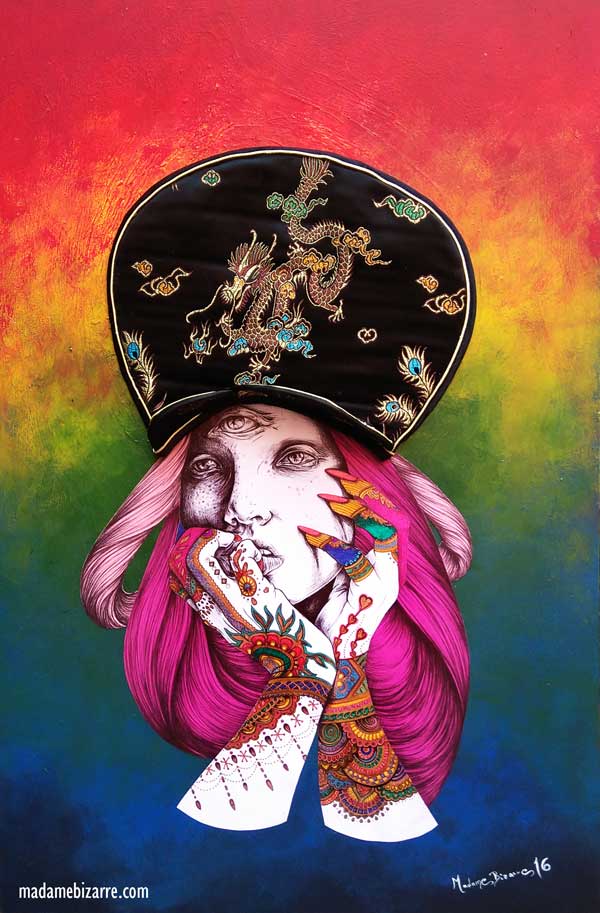










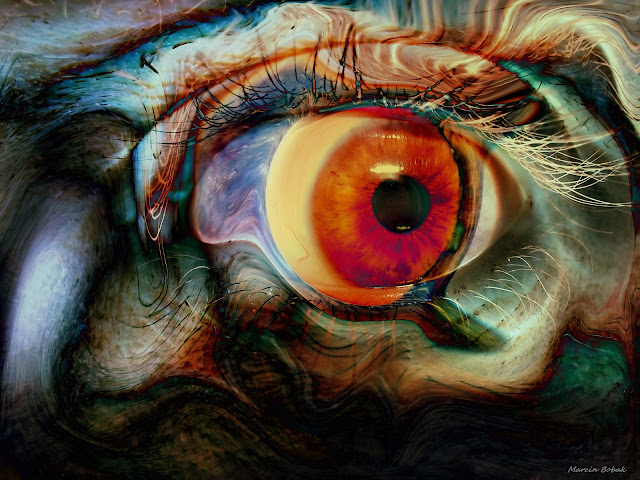




























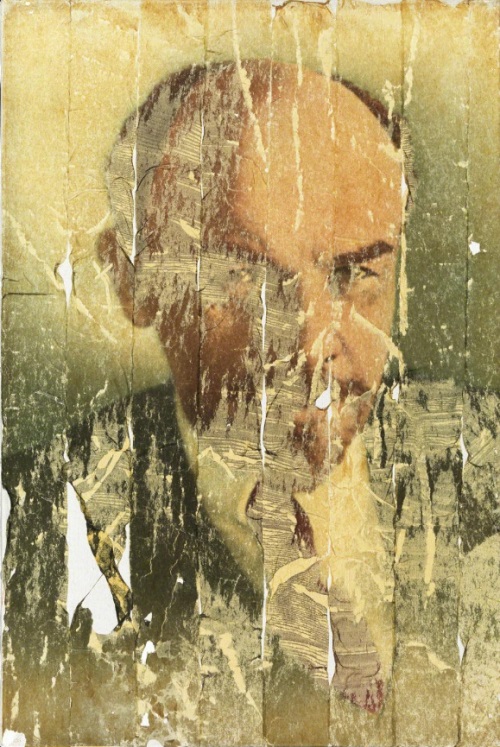

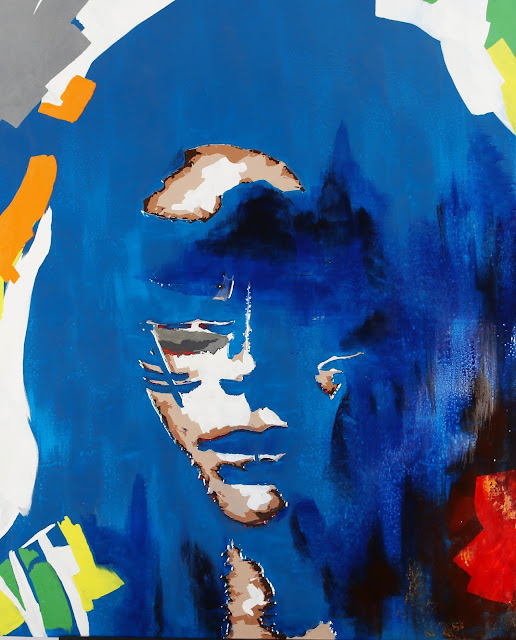






























































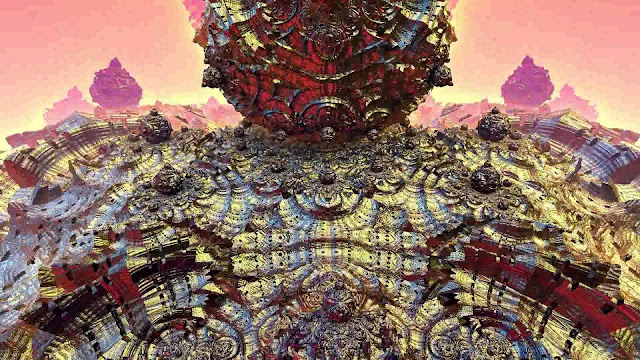


























































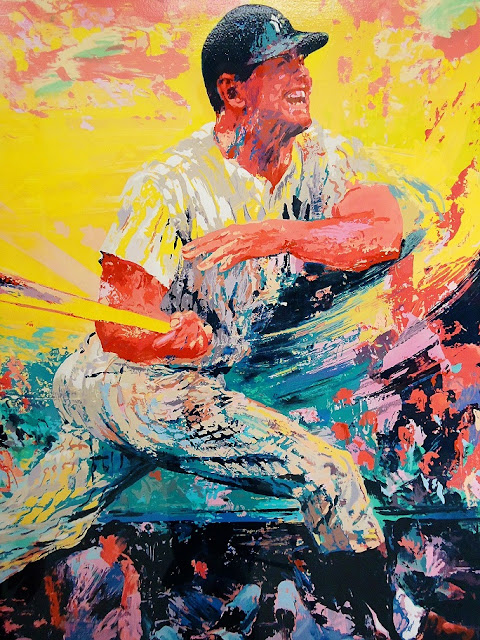















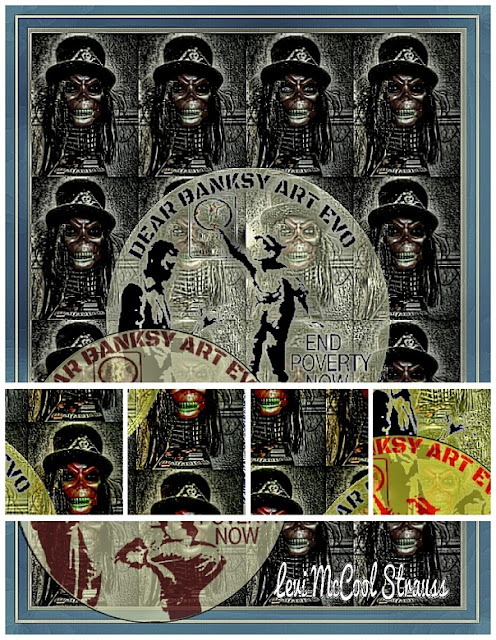
















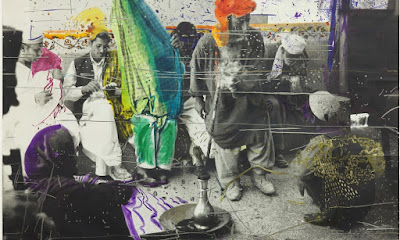






























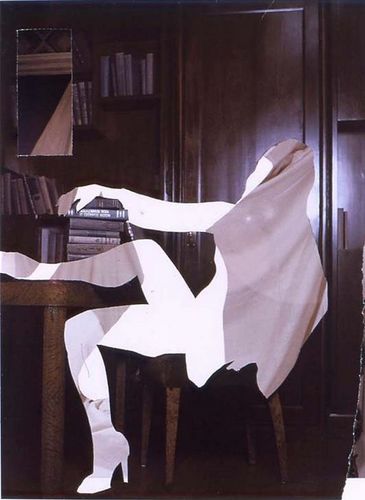




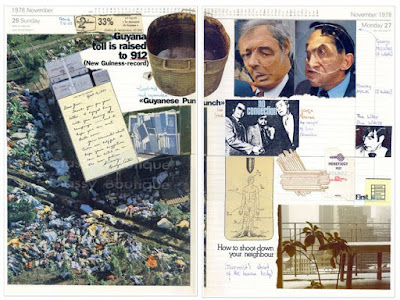

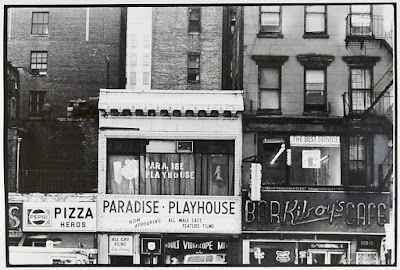






































































































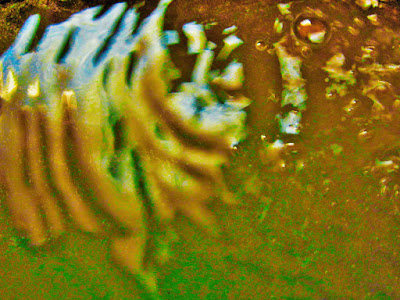

































































.jpg)











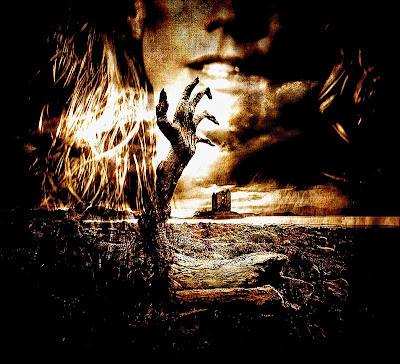




No comments:
Post a Comment